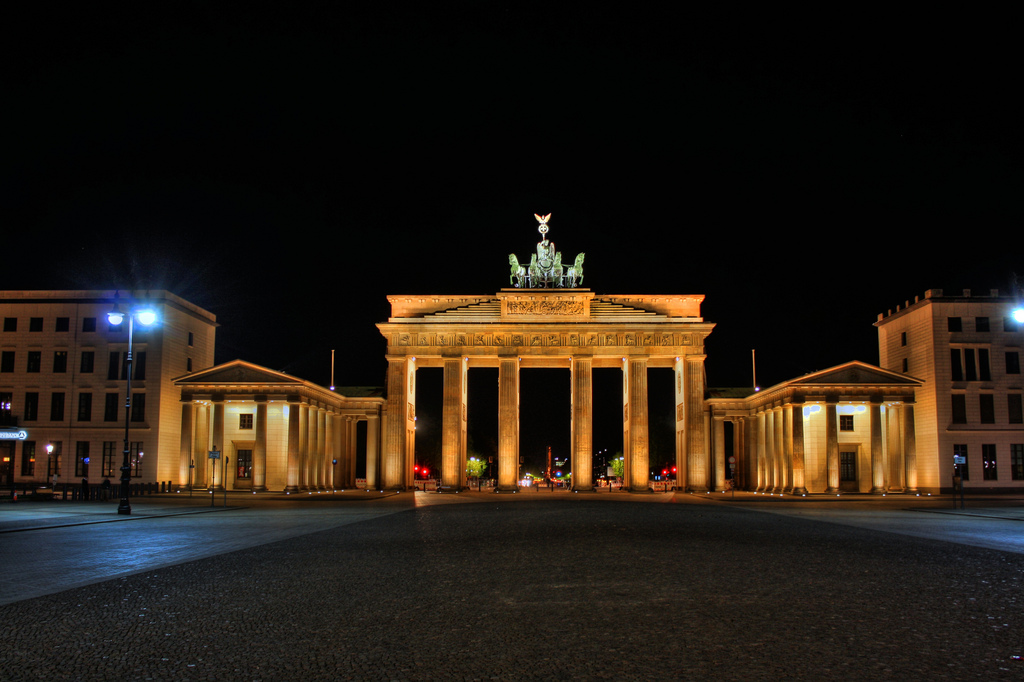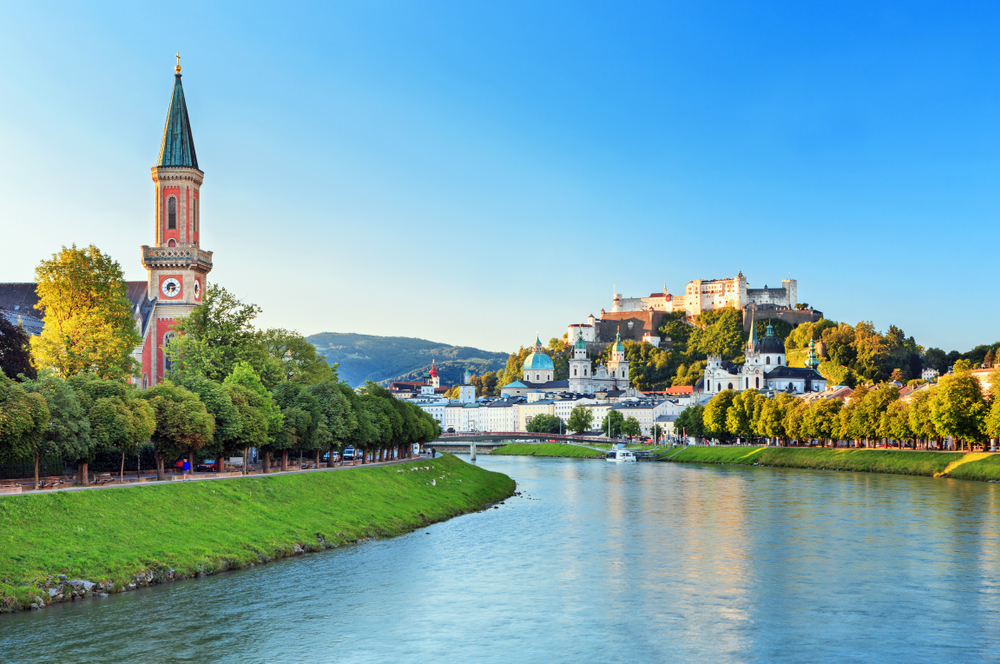Emerging from the dark and devastation of World War II, Berlin is symbolic of a modern and dynamic European city where people from throughout the continent can come together in celebration of our new found peace and unity. Throughout the capital of modern Germany there are reminders of a past never to be repeated, none more so than the inner city car park where a simple plaque identifies the ‘Führerbunker’ where Adolf Hitler committed suicide at the end of the war. The city has long moved on from the ravages of Nazism discreetly erasing most landmarks pertaining to that regime whilst still paying tribute to the country’s Jewish population and the atrocities they suffered in the moving Jewish Museum. Strangely for most of us, it isn’t the Second World War which we associate with the city of Berlin but events which took place in August 1961, sixteen years after the war ended.
The Berlin Wall
After the war the city had been divided into four sections at the Potsdam Agreement: the United States, the United Kingdom, France and the Soviet Union. To facilitate reconstruction the Western Allies combined their sectors into what we refer to as West Berlin whilst the Soviet Union controlled the rest. In 1948 the Soviet leader Joseph Stalin prevented essential supplies from being transported into West Berlin in what was known as the Berlin Blockade which resulted in a massive airlift of food and other key commodities by an alliance of western countries. An uneasy relationship prevailed between east and west but as living standards in West Germany began to far exceed those in East Germany hundreds of thousands of citizens moved from the East to the West. Consequently an inner German border was built from barbed wire preventing this migration to the West, however, the border between East and West Berlin remained open.
By 1961 some 3½ million East Germans had moved to the West which represented 20% of the country’s population. Many of these were young, well educated citizens. This ‘brain drain’ was no longer sustainable for the East so on the night of 12 August 1961 the East German army created a barbed wire fence that split the city in two. This soon became a heavily armed concrete structure which not only prevented East Berliners from getting to their jobs in the West of the city but also prevented many families from seeing one another as they were on the other side of the fence. A city divided.
Berlin remained central to the ‘Cold War’ which resulted between the Western Allies and the Soviet Bloc becoming a popular destination for film companies producing espionage films in the post-war era. How many of us haven’t seen Harry Palmer played by Michael Caine crossing Checkpoint Charlie in the 1966 Spy thriller ‘Funeral in Berlin’?
In 1986 the Soviet leader Mikhail Gorbachev had begun a process of restructuring (‘Perestroika’) which opened communication channels with the West and reduced Cold War tensions. His announcement that countries from the Eastern bloc would be allowed to freely determine their own internal affairs came as a surprise to Western observers. Elections in Poland deposed their Communist government, the Baltic states demanded their independence and nationalist voices were heard in Georgia, Ukraine and beyond. It was now just a matter of time before the Berlin Wall came down and on November 9th 1989 East German guards opened the gates allowing free movement between East and West and preempting the unification of East and West Germany into a single country on 3rd October 1990 with its new capital in Berlin.
Getting There
Not surprisingly the city of Berlin is of enormous historical importance attracting millions of annual visitors to the extent that it is Europe’s 3rd most visited city after London and Paris. There are currently two key entry points for airline passengers:
Berlin Tegel Airport – Berlin’s main airport lies just 8km north-west of the city centre. It is a hub for Air Berlin which operates a vast network of domestic flights as well as services from other European countries.
Berlin Schönefeld Airport – Whilst not as large as Tegel, the Schönefeld Airport attracts significant traffic thanks to its affiliation with easyJet and Condor airlines. It lies 18km south-east of the city centre.
Coming Soon – There is a new airport currently under construction which is located right next to Berlin Schönefeld. This airport will be known as Berlin Brandenburg Airport and it will replace both Schönefeld and Tegel in becoming Berlin’s only airport and German’s third busiest with a projected 30 million annual passengers. It isn’t expected to be in operation before 2017 at the earliest.
From Berlin Tegel there are bus services into the city but no rail links. From Schönefeld you can take the Berlin S-Bahn train link into the city centre as well as bus services. Alternatively, it’s well worth booking a private or shared shuttle transfer into the city with a specialist transfer company such as Shuttledirect. They offer services from both Berlin Tegel and Berlin Schönefeld.
Getting Around
By Train – Berlin has a remarkable train system consisting of the U-Bahn which connects central areas on underground lines and the S-Bahn which is mainly above ground and links more distant areas. Whilst the speed and efficiency are remarkable in themselves it is the fact that there are no ticket barriers and (seemingly) no ticket inspectors yet everyone buys tickets which surprised me … in a week of travelling around the Greater Berlin region not once was my ticket checked. It seems that Berlin’s train network is successfully financed by means of an ‘honesty box’! What was East Berlin still has some tram services in operation.
By Bus – Whilst not as fast as the train it’s a good idea to buy a day pass on one of the city’s yellow double-decker buses which offer an ideal way to see most of the city’s main tourist attractions. Bus lines 100 and 200 are the ones of most interest to tourists. The official tourist information office next to the Brandenburg Gate is a good place to pick up information about transport routes and timetables.
Walking and Cycling – If you’re fit and able then you can see most of central Berlin on foot. Just pick up a map at the tourist information office and off you go. To travel further afield you can rent bikes as the city is extremely cycle friendly offering an impressive network of cycle paths.
My Top 10 Tourist Attractions
In a city the size of Berlin there are so many things to see and do. Rather than attempting to provide the definitive guide to Berlin’s attractions let me simply summarize my favourite experiences based on my recent visit there:
Brandenburg Gate: Recognised worldwide as the iconic symbol of Berlin.
Berlin Wall Memorial: The main place to see a small section of the wall which is still standing and where you can try to comprehend what its construction meant to Berliners.
Reichstag Building: This stunning building which dates back to 1894 has been the home of the new German Parliament since 1999. Didn’t manage to get inside as we hadn’t booked in advance.
Jewish Museum: An architecturally unique building depicts the history of Jewish people in Germany including the horror of the Holocaust.
Checkpoint Charlie: This was the most famous checkpoint between East and West Berlin during the Cold War. Today a replica of the guardhouse stands on Friedrichstraße where tourists can have a photo taken with actors dressed as guards.
Museum Island River Walk: Even if you’re not fond of spending your days in art galleries it’s well worth a visit to Berlin’s Museum Island just to see the impressive selection of spectacular buildings which have collectively been recognised as a World Heritage Site.
Tiergarten: This beautiful inner city park is a welcome break from sightseeing located right next to the Brandenburg Gate.
Berlin Zoo: Located inside the Tiergarten is one of the world’s most popular zoos with approximately three million annual visitors.
Hertha Berlin’s Stadium: I had to pay a visit to the Hertha Berlin football stadium which was actually built to host the 1936 Olympic Games where Jesse Owens famously won four gold medals effectively destroying Hitler’s attempt to promote Aryan racial supremacy. Well done Jesse.
Day Trip to Potsdam: If you’ve still got the energy after visiting the city’s main sights try to find time for a day trip to Potsdam which is only 25km outside the city and accessible by public transport. It was here at the Potsdam Conference in 1945 that Stalin, Churchill, and Truman got together to make plans for post-war order following the defeat of Nazi Germany.
Where to Stay
Nowadays there’s little discernible difference between East and West Berlin so this isn’t even a consideration when choosing where to stay. The majority of visitors choose to stay in the large Mitte neighbourhood which encompasses most of the city’s main attractions as well having plenty lively bars and nice restaurants. This is a very safe place to walk around even at night so is an ideal choice when deciding on where to look for accommodation. The 5-star Das Stue (Drakestrasse 1) is the pick of the bunch when it comes to choosing a luxury hotel in this part of town. Further west is the Charlottenburg-Wilmersdorf neighbourhood which was the city centre of the former West Berlin. It is also highly recommended when it comes to looking for a great place to stay with top notch accommodation such as the Waldorf Astoria Berlin. If the prices of these establishments are out of your range you shouldn’t have much problem finding mid-range hotels in both of these areas. There are also a fine range of cheaper hotels and hostels catering to budget travellers.
Beer and Sausages
There’s only so much sightseeing to be done in Berlin before it’s time to try out the local beer and in a country where there are more than 5000 different brews it’s rarely a problem finding a nice little local bar where you can try them. Connoisseurs should look out for Berliner Weisse when visiting Berlin. This wheat beer used to be the city’s most popular beverage with hundreds of breweries producing it, but today it is rarely on offer having been replaced by the mass produced national brands such as Oettinger, Krombacher and Warsteiner. Whilst many of these bars will serve decent food at reasonable prices it’s the ‘bratwurst’ sausages sold on the street from mobile vendors who walk around with a gas canister strapped to their back that are my lasting memory of eating in Berlin. For an additional local flavour try out the ‘currywurst’ which is a local ‘bratwurst’ sausage covered with curry powder and tomato ketchup. Not exactly fine dining but highly recommended nonetheless.




